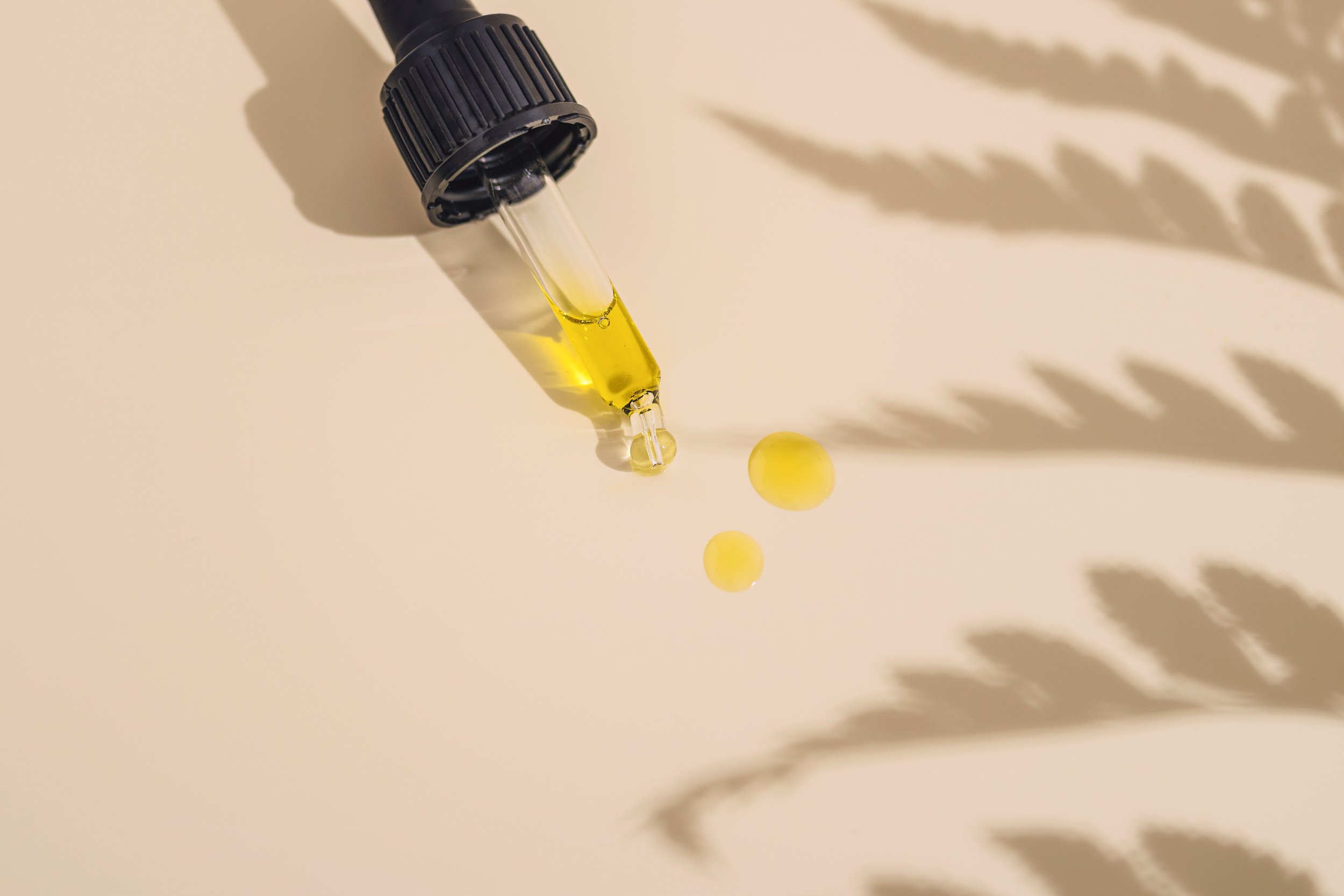Unlocking the Secrets of Non-Toxic Skincare: The Functional Medicine and Nutritional Therapy Guide to a Healthy Glow
Introduction
In recent years, there has been a growing trend towards non-toxic skincare products. People are becoming more aware of the chemicals found in many skincare products and their potential negative effects on health. Functional medicine and nutritional therapy perspectives advocate for non-toxic skincare as a way to promote overall health and wellness. In this blog post, we will discuss why non-toxic skincare is important, how to choose non-toxic skincare products, and common chemicals found in skincare products and their potential negative effects on health.
Why Choose Non-Toxic Skincare?
Your skin is the largest organ of your body and is responsible for protecting you from external factors like the sun, pollutants, and harmful chemicals. Your skin also plays a crucial role in detoxification, regulating body temperature, and immune defense. Traditional skincare products often contain chemicals like parabens, phthalates, formaldehyde, and sulfates that can be absorbed into the skin and potentially cause harm to your health. Studies have shown that these chemicals can disrupt hormones, cause allergic reactions, and even increase the risk of cancer.
Non-toxic skincare products are made without harmful chemicals, making them a safer option for your health. They also tend to be more environmentally friendly, as they are often made from natural and organic ingredients. Choosing non-toxic skincare products is a way to take care of your skin while promoting overall health and wellness.
How to Choose Non-Toxic Skincare Products?
Choosing non-toxic skincare products can be challenging, as many products marketed as “natural” or “organic” can still contain harmful chemicals. Here are some tips to help you choose non-toxic skincare products:
Check the ingredients list: Look for products that list all of their ingredients and avoid products that contain harmful chemicals like parabens, phthalates, formaldehyde, and sulfates.
Look for certifications: Look for certifications from reputable organizations like the Environmental Working Group (EWG) or the USDA Organic seal. These certifications ensure that the product meets specific standards for non-toxic and organic ingredients.
Choose fragrance-free products: Fragrances are often made from a combination of chemicals, some of which can be harmful to your health. Choose fragrance-free products or those with natural fragrances like essential oils.
Avoid products with high-risk ingredients: Some ingredients are known to be more harmful than others. Avoid products that contain ingredients like oxybenzone, retinyl palmitate, and hydroquinone.
Research the brand: Do some research on the brand before purchasing their products. Look for brands that prioritize non-toxic ingredients and sustainability.
Common Chemicals Found in Skincare Products
Here are some common chemicals found in skincare products and their potential negative effects on health:
Parabens: Parabens are a type of preservative commonly found in skincare products. They have been linked to hormone disruption, which can lead to reproductive problems and increased risk of breast cancer.
Phthalates: Phthalates are a group of chemicals commonly found in fragrances and can disrupt hormones, potentially leading to reproductive problems and increased risk of breast cancer.
Formaldehyde: Formaldehyde is a preservative used in many skincare and personal care products. It is a known carcinogen and can also cause allergic reactions.
Sulfates: Sulfates are often found in foaming products like shampoos and body washes. They can strip the skin of its natural oils, leading to dryness and irritation.
Online Resource for Checking Non-Toxic Skincare Products
The Environmental Working Group (EWG) is an online resource that provides a database of skincare and personal care products and rates them based on their potential health hazards. They also provide detailed information on the ingredients used in the products and their potential effects on health. The database is searchable by product name or brand, making it easy to check the safety of the products you use. Check it out here: https://www.ewg.org/skindeep/ Additionally, the EWG provides a rating system from 1-10, with 1 being the safest and 10 being the most hazardous.
Functional Medicine and Nutritional Therapy Perspective
Functional medicine and nutritional therapy focus on treating the root cause of health problems, rather than just managing symptoms. From this perspective, non-toxic skincare is an essential part of overall health and wellness. The body absorbs up to 60% of what is applied to the skin, and many traditional skincare products contain harmful chemicals that can negatively affect health.
Functional medicine and nutritional therapy recommend non-toxic skincare products that are free from harmful chemicals and made from natural and organic ingredients. They also advocate for a holistic approach to skincare, including proper nutrition, hydration, and sleep, as well as reducing stress and exposure to environmental toxins.
Conclusion
Non-toxic skincare is an essential part of overall health and wellness. Traditional skincare products often contain harmful chemicals that can negatively affect health, and functional medicine and nutritional therapy perspectives advocate for non-toxic skincare products that are free from harmful chemicals and made from natural and organic ingredients. When choosing non-toxic skincare products, it's essential to check the ingredients list, look for certifications, choose fragrance-free products, avoid high-risk ingredients, and research the brand. The Environmental Working Group (EWG) provides an online database of skincare and personal care products, making it easy to check the safety of the products you use. By prioritising non-toxic skincare products, you can take care of your skin while promoting overall health and wellness.
References
Dodson RE, Nishioka M, Standley LJ, et al. Endocrine Disruptors and Asthma-Associated Chemicals in Consumer Products. Environ Health Perspect. 2012;120(7):935-943.
Janjua NR, Frederiksen H, Skakkebaek NE, et al. Urinary excretion of phthalates and paraben after repeated whole-body topical application in humans. Int J Androl. 2008;31(2):118-130.
Kim JH. Health Risks of Exposure to Cosmetic Ingredients. Journal of Preventive Medicine and Public Health. 2016;49(3):164-168.
Pugacheva EN, Polonskaya AV, Nekrasovkaia OD, et al. Endocrine disruptors and human health. Gig Sanit. 2018;97(2):176-180.
Rudel RA, Gray JM, Engel CL, et al. Food Packaging and Bisphenol A and Bis(2-Ethyhexyl) Phthalate Exposure: Findings from a Dietary Intervention. Environ Health Perspect. 2011;119(7):914-920.
Schreurs RH, Sonneveld E, Jansen JH, et al. Interaction of polycyclic musks and UV filters with the estrogen receptor (ER), androgen receptor (AR), and progesterone receptor (PR) in reporter gene bioassays. Toxicol Sci. 2005;83(2):264-272.
Wu X, Bennett DH, Ritz B, et al. Dermal uptake of phthalates from clothing: Comparison of three skin models. Environ Int. 2017;98:88-94.
Xu X, Dailey AB, Talbott EO, et al. Associations of Serum Concentrations of Organochlorine Pesticides with Breast Cancer and Prostate Cancer in US. Adults: National Health and Nutrition Examination Survey 1999-2002. Environ Health Perspect. 2010;118(1):60-66.
Environmental Working Group. Skin Deep® | EWG’s Guide to Healthy Cleaning. https://www.ewg.org/skindeep/. Accessed March 31, 2023.
Gould L, Abadir P, Bremner L, et al. Ageing and the skin: implications for the beauty industry. British Journal of Dermatology. 2018;179(2):257-262

